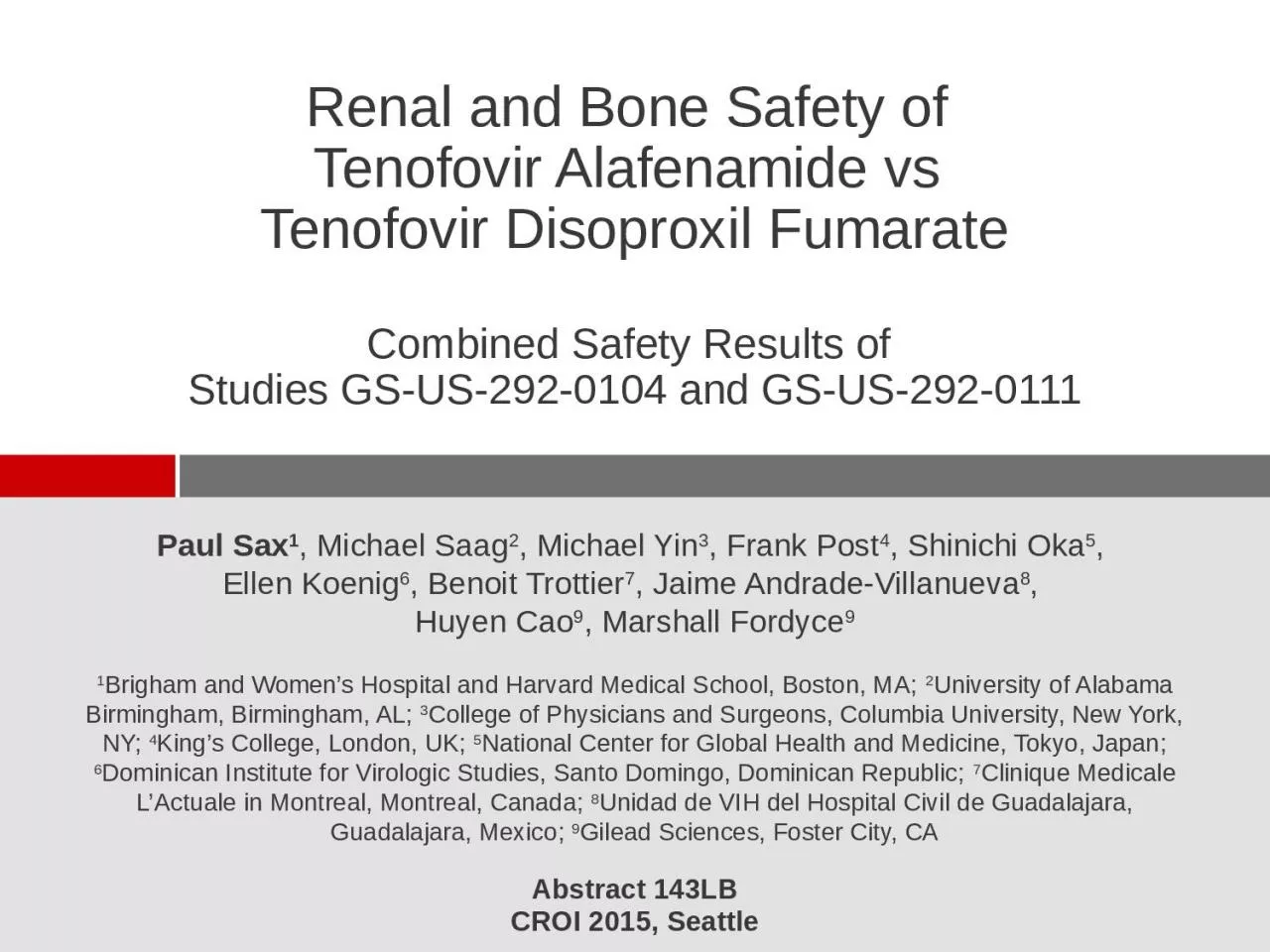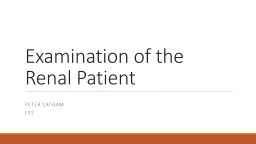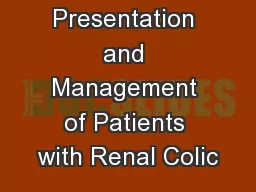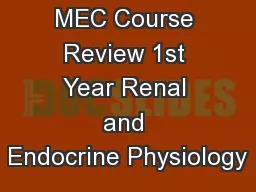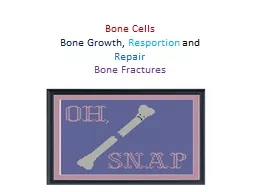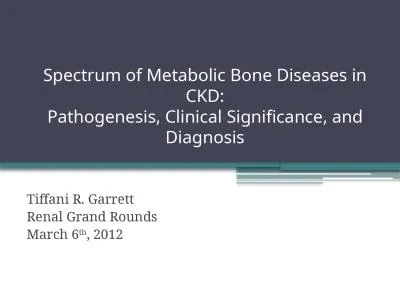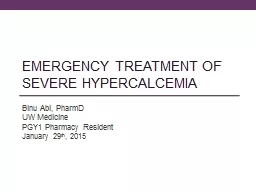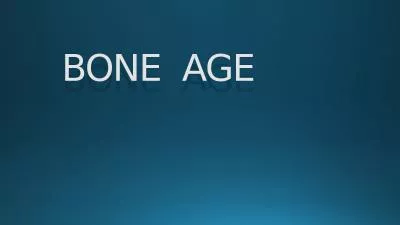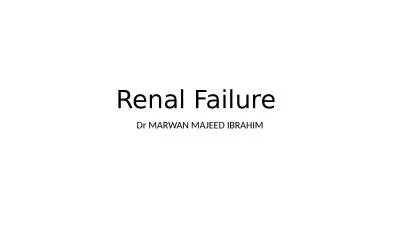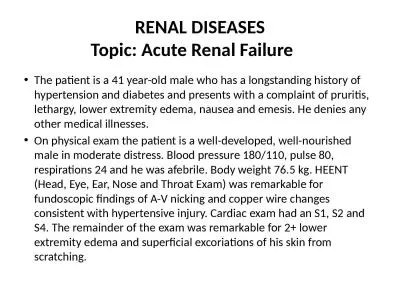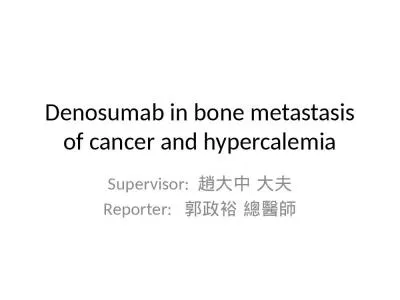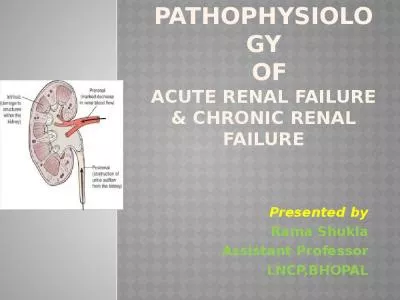PPT-Renal and Bone Safety of
Author : ashley | Published Date : 2022-06-20
Tenofovir Alafenamide vs Tenofovir Disoproxil Fumarate Combined Safety Results of Studies GSUS2920104 and GSUS2920111 Paul Sax 1 Michael Saag 2 Michael Yin
Presentation Embed Code
Download Presentation
Download Presentation The PPT/PDF document "Renal and Bone Safety of" is the property of its rightful owner. Permission is granted to download and print the materials on this website for personal, non-commercial use only, and to display it on your personal computer provided you do not modify the materials and that you retain all copyright notices contained in the materials. By downloading content from our website, you accept the terms of this agreement.
Renal and Bone Safety of: Transcript
Download Rules Of Document
"Renal and Bone Safety of"The content belongs to its owner. You may download and print it for personal use, without modification, and keep all copyright notices. By downloading, you agree to these terms.
Related Documents

